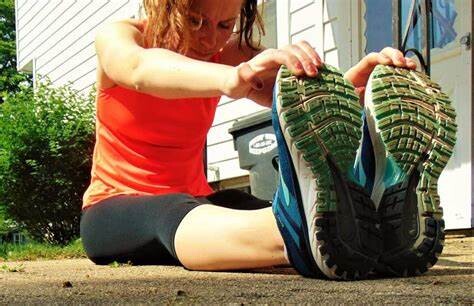Running News Daily
Running News Daily is edited by Bob Anderson. Send your news items to bob@mybestruns.com Advertising opportunities available. Train the Kenyan Way at KATA Kenya and Portugal owned and operated by Bob Anderson. Be sure to catch our movie A Long Run the movie KATA Running Camps and KATA Potato Farms - 31 now open in Kenya! https://kata.ke/
Index to Daily Posts · Sign Up For Updates · Run The World Feed
Recovery runs: Everything you need to know
At first glance, the words ‘recovery’ and ‘run’ might seem juxtaposed. After all, running is about expending energy, while recovery seems to be about recouping it. Even if we accept the term, what’s the point of a recovery run? And how does it distinguish itself from other forms of running, such as easy running? Understanding the definition and purpose of recovery runs can help you to incorporate them into your routine – boosting your recovery and overall fitness.
What’s the point of a recovery run?
In the aftermath of a hard workout or race, your muscles can become sore – a phenomenon known as DOMS (short for ‘delayed onset muscle soreness’). In this state, the prospect of running may seem unappealing, but doing so can loosen up the body by increasing blood flow to the muscles and flushing out waste. This, in short, is the purpose of a recovery run.

How do you do a recovery run?
In many ways, a recovery run is similar to an easy run. It’s done at a slow pace (or in heart rate zones 1 or 2, for those who use that as a metric) and should feel easy and relaxed throughout. However, from a duration perspective, recovery runs tend to be around 20-30 minutes in length, whereas easy runs could conceivably stretch to an hour or more. The reason for this is that, after 30 minutes of running, the body begins to produce metabolic waste, which in itself requires recovery time. When it comes to recovery runs, think easy and short.

What is active recovery?
Another terms that seems self-contradictory, active recovery is loosely defined as ‘low-intensity exercise that a person performs after high-intensity exercise to improve recovery’. Recovery runs fit firmly into this category. The alternative to active recovery is passive recovery, defined as ‘a period of inactivity after exercise where the body is allowed to heal without any additional physical activity’. Neither is better than the other, and the smart runner will use a combination of both passive and active recovery. As a general rule, though, passive recovery is the better choice if you’re showing signs of overtraining. These signs include extreme tiredness, lingering soreness, trouble sleeping, irritability or an elevated resting heart rate.
Is recovery different for men and women?
Although both sexes need to recover adequately after hard workouts and races, there is some evidence to suggest that recovery times vary between men and women. In a new study that looked at men and women who’d just run a half marathon, women showed earlier functional recovery than men. There are several potential reasons for this. One is that women have lower muscle mass and power output than men, so are therefore considered less prone to fatige. Another is the role of estrogen, which might lower the impact of exercise-related skeletal muscle damage. That said, women’s recovery is heavily influenced by where they are in their menstrual cycle, with one study finding that menstruation raises metabolic rate by more than 6% – something that will an impact on recovery and overall perception of fatigue.
What are the alternatives to recovery runs?
Of all the types of running session, recovery runs are probably the easiest ones to substitute for other cross training activities. Low-impact activities such as cycling or swimming will provide the same benefits, without any of the pavement pounding. If you’re a runner who is susceptible to impact injuries, such as stress fractures or shin splints, it’s worth thinking about whether your next recovery session actually needs to be a run.
by Rick Pearson
Login to leave a comment




